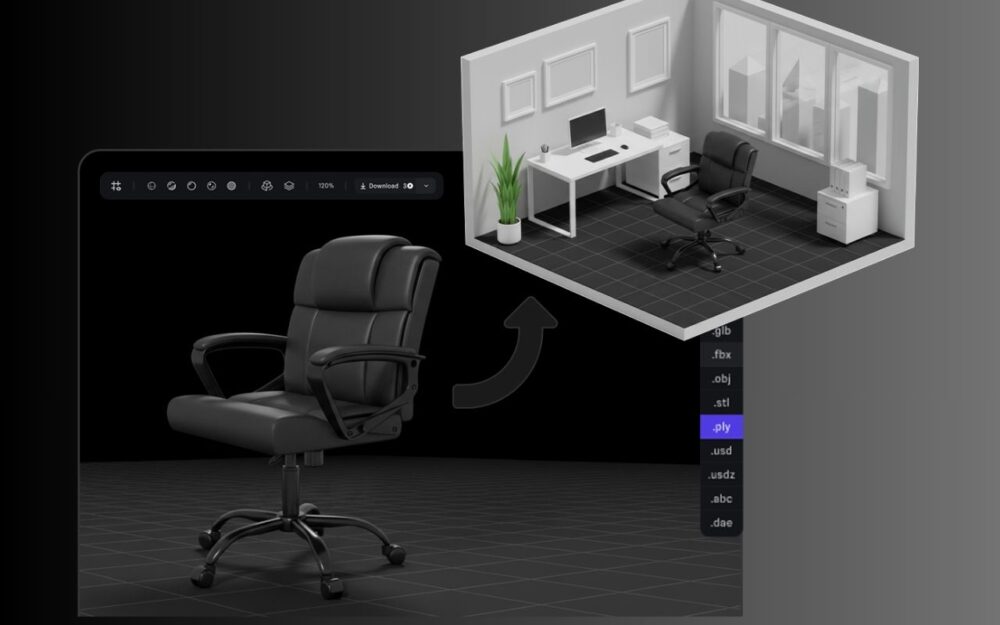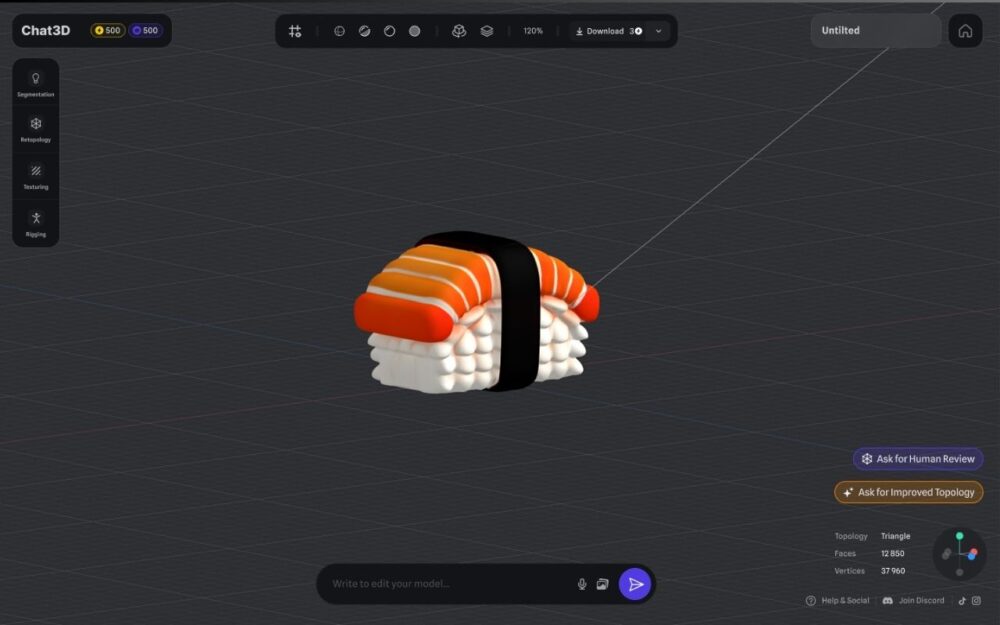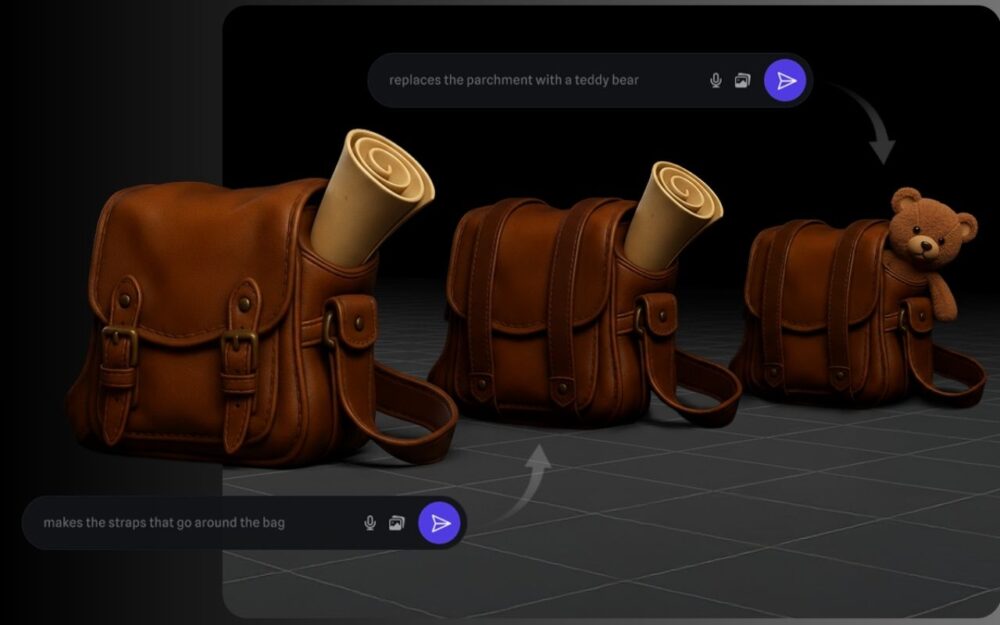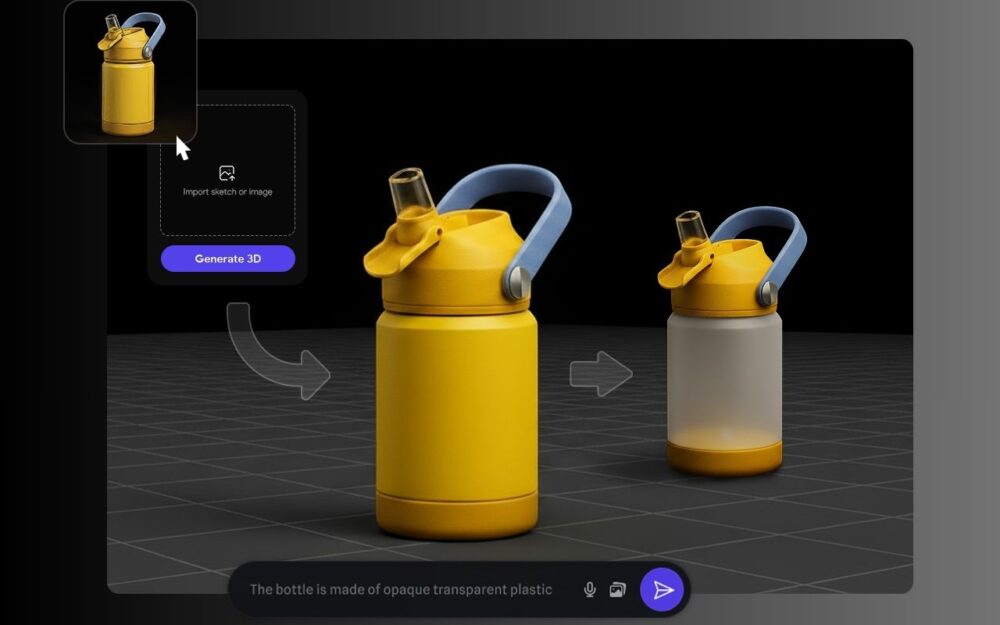Barely a year after its creation by two young engineering students, Chat3D is rapidly emerging as one of the most promising players in the French deep tech ecosystem. Based in Lyon, the startup has just raised €3 million and announced a strategic partnership with Nvidia, a key move to accelerate the development of its generative AI technology for 3D modeling. We spoke with Félix Balmonet, one of the co-founders, who shared insights into the company’s fast rise, its industrial ambitions, and its vision for the future of 3D creation.
It’s a French deep tech startup that’s been making quite a splash lately. Founded just over a year ago by two young entrepreneurs, Félix Balmonet and Glenn Avezoux, who were still engineering students at the time, Chat3D is moving fast.
Over the past eight months, the Lyon-based company has been awarded the DeepTech and Young Innovative Research Company (JEIR) labels. It has just completed its first funding round, raising €3 million from three French investment funds (Mesh Ventures, Innov’Alpes, and Campus Fund) along with a group of specialized business angels.
At the same time, the co-founders can also boast of securing a strategic partnership with Nvidia, the semiconductor giant and now an essential ally for any company building its business model around artificial intelligence.
We spoke with Félix Balmonet, one of the two co-founders, while he was attending a trade show in Germany. He told us about the origins of the project, which began when he and his friend Glenn were still engineering students.
From Machine Tools to Generative 3D
“When we started, we were building machine tools for industrial parts and working extensively on 3D printing,” recalls Balmonet. “But we soon realized that the real barrier to widespread 3D adoption — whether for industry or virtual reality — wasn’t the hardware, it was the complexity of creation.”
For anyone who has tried to use professional CAD software like Autodesk or Dassault Systèmes’ Catia, that complexity is well known.
“These tools are powerful,” he says, “but they’re time-consuming and require expert knowledge. Engineers or operators involved in Industry 4.0 projects often don’t have the time or the training to use them effectively.”
So the founders set out to make 3D modeling as easy and fast as possible. Their solution: a generative AI capable of producing a 3D model automatically from a simple photo, series of images, or text prompt. In a matter of seconds, users can generate a “ready-to-use” 3D object that is suitable for video games, animation, virtual or augmented reality environments, or even direct 3D printing.
“With Chat3D, what used to take an engineer two days can now be done in under fifteen minutes,” says Balmonet. “Compared to traditional 3D scanning workflows, we’re achieving time savings of around 95%.”
Bringing Generative AI into Industrial Workflows
While the technology has clear applications in gaming and design, Chat3D is finding strong traction in industrial sectors such as manufacturing, automotive, and luxury prototyping. Balmonet cites an example from industrial training:
“Many companies now prefer to train workers in virtual environments for safety reasons. With Chat3D, they can photograph real workspaces and recreate them virtually in minutes — where it used to take days.”
The startup’s technology sits at the crossroads of CAD, digital twins, and AI, generating 3D models with an accuracy of about 5–10 millimeters — more than enough for visualization, simulation, and prototyping purposes.
Chat3D has already established a partnership with 3DVERSE, a company close to Siemens that specializes in digital twin creation. Their collaboration integrates Chat3D’s engine into industrial software platforms, enabling operators to scan or photograph factory equipment and generate instantly usable virtual replicas for augmented reality applications, training, and maintenance.

Complementing, Not Competing with CAD Giants
Balmonet is careful to clarify that Chat3D isn’t trying to replace established CAD tools like Catia or Autodesk.
“We’re complementary,” he says. “Traditional software excels at precision engineering, but lacks automation. Chat3D fills that gap by bringing AI-driven speed and accessibility into the workflow.”
The startup’s long-term vision is to evolve from a 2D-to-3D generator into a full-fledged 3D modeling assistant.
“Imagine being able to talk to your modeling software like you talk to ChatGPT,” says Balmonet. “You could ask it to add a cushion to a chair or change the material of an object using natural language. That’s what we’re building.”
An Ethical, Sovereign Approach to AI
In an industry where data sourcing is a major ethical and legal challenge, Chat3D distinguishes itself through a responsible AI philosophy.
“We refuse to train our models on copyrighted data and never reuse our clients’ creations for further training,” Balmonet emphasizes. “For industrial customers, that’s a decisive factor — it guarantees that their intellectual property remains fully protected.”
This data sovereignty and ethical positioning resonate particularly well with European companies in aerospace, automotive, and luxury manufacturing, which face strict compliance and confidentiality requirements.
“We’re still small,” says Balmonet, “but being a French company gives us a credibility advantage in ethical AI. Our goal is to prove that a sovereign, responsible, and high-performance 3D AI can compete on a global scale.”


Partnering with Nvidia: A Strategic Advantage
Training large generative models for 3D creation is resource-intensive and expensive — which is why the startup’s partnership with Nvidia is so significant.
“This partnership gives us access to the latest GPU architectures, technical support, and Nvidia’s research network,” explains Balmonet. “It allows us to train models faster and more efficiently, without compromising performance or quality.”
Nvidia’s own growing focus on 3D technologies — including the development of its Universal Scene Description (USD) format — underscores the strategic importance of such collaborations for the emerging 3D AI ecosystem.
Fueling Growth: Research and Public Access
With its new funding, Chat3D now aims to pursue two key goals. First, they want to accelerate R&D, by expanding their research team (including PhD-level talent) to improve model precision and enable the generation of full-scale industrial environments. Then, they intend to launch a public version of its technology — a web and mobile app that democratizes 3D creation.
“This will be like a ChatGPT for 3D,” says Balmonet. “Anyone will be able to generate or edit 3D objects directly in their browser, using natural language.”
A Fast-Growing Deep Tech Ecosystem
Recognized with the DeepTech and Jeune Entreprise Innovante de Recherche (JEIR) labels, Chat3D has grown from zero to 20 employees in under a year, with hires across France, the UK, and India.
The startup is already working with clients in immersive training, manufacturing, and luxury industries, while maintaining regular exchanges with major software players like Autodesk and Dassault Systèmes.
By a twist of timing, Autodesk used Autodesk University 2025 in Nashville earlier in September as the stage to unveil major breakthroughs that could redefine how we design, build, and manufacture. At the heart of these innovations is Neural CAD — an AI that not only understands design intent but can also create. Like Chat3D, this new foundation model can interpret a sketch, a drawing, or even a natural language description, and instantly transform it into usable design objects.
Integrated into Forma for architecture and urban planning, and Fusion for engineering and manufacturing, Neural CAD promises a seamless transition from sketch to detailed project, a dramatic boost in both creativity and efficiency, and fewer errors from the very first stages of design.
Interested in French start-ups? Read our other company profiles 100% made in France









![Image [Buying Guide] How to Choose the Right Protection Gloves?](/wp-content/uploads/sites/3/Gloves-1-320x213.jpg)
